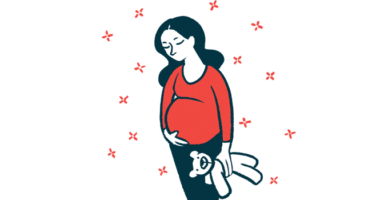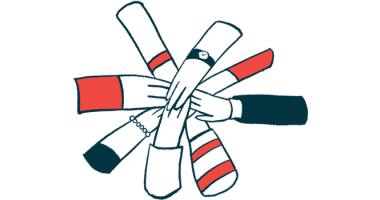Why sharing our stories for Fabry Disease Awareness Month is vital
It takes a village, but it has to start with you and me

Clad in a sweaty helmet, shoulder pads, and practice gear, an 11-year-old football player pushes through the pain of cramping and burning feet. Hiding his tears, he doesn’t complain because he wants to be tough, play hard, and lead the team to victory.
Would it have been a relief for him to know the source of his pain, and that he had been dealt a harder hand than most of the boys on the field with him?
A seventh grader enjoys being away from home at summer camp yet finds himself spending long hours in crude, wooden, restroom stalls. From his vulnerable position in the bathroom, he recognizes the voice of a cabin mate and musters the courage to ask his new friend to bring him the Pepto-Bismol bottle stashed in his duffle bag.
Would he have felt less embarrassed if he had a diagnosis, medical waiver, or medicines on hand?

(Courtesy of Jerry Walter)
Excited to finally get invited to hang out with a fun group of girls, a tween Fabry patient cuts her fun short because she can’t ignore the stomach pains. Amid giggling middle schoolers who are playing board games and eating junk food, the girl reluctantly texts her mom to pick her up early from the gathering.
Would it be a comfort to know other girls who leave their friends’ parties in pain?
These real scenarios depict a few of the many reasons why Fabry Disease Awareness Month, in April, is vitally important. People across the globe are undiagnosed, untreated, or isolated in their Fabry struggles. The psychological strain is acutely felt because nobody understands what they are going through.
Joining forces
This month, advocacy groups, patients, and their families are encouraged to join forces and rally under the banner of Fabry disease awareness. It takes a village, but it has to start with you and me.
When my family became part of the growing Fabry community (along with me, three of my five children were also diagnosed with Fabry disease), I learned that we have our own ribbon. Make sure to check it out, along with other Fabry disease awareness materials provided by the National Fabry Disease Foundation. Read, share, and invite others to join the fight for Fabry awareness.
Being under the care of doctors and nurses who are knowledgeable about Fabry disease has been immeasurably important to my kids. Our healthcare providers have extensive experience with Fabry patients, and they’ve equipped us with tremendous peace and confidence.
Patient education liaisons have also stood out as wonderful aides on the journey, providing vast educational resources and personalized answers to our treatment questions.
Thanks to a growing awareness of Fabry disease, our allies are connecting with Fabry patients globally.
Drawing attention to Fabry disease this month and every day can help to improve the recognition, diagnosis, treatment, and support of Fabry patients.
Note: Fabry Disease News is strictly a news and information website about the disease. It does not provide medical advice, diagnosis, or treatment. This content is not intended to be a substitute for professional medical advice, diagnosis, or treatment. Always seek the advice of your physician or other qualified health provider with any questions you may have regarding a medical condition. Never disregard professional medical advice or delay in seeking it because of something you have read on this website. The opinions expressed in this column are not those of Fabry Disease News or its parent company, BioNews, and are intended to spark discussion about issues pertaining to Fabry disease.








Comments